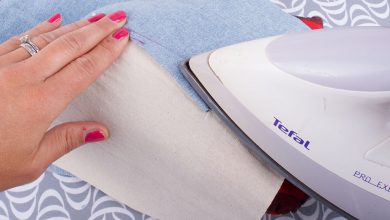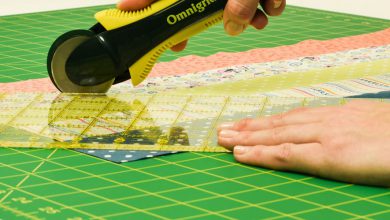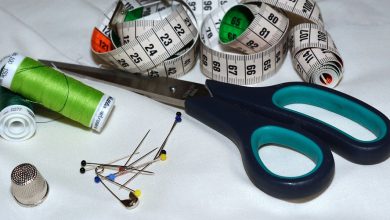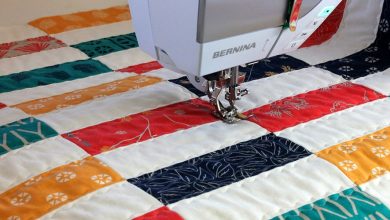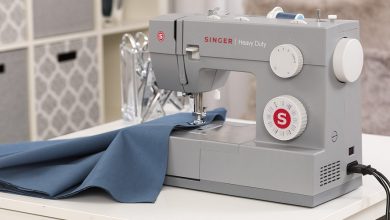We all want to have the prettiest workspace for sewing and crafting, but there is a lot more to finding a quality sewing table that decorative design. The practical side should not be ignored, and numerous elements go into the better products. Because these are built differently from a regular table, it is important to do a little research.
This is why we have created the following buyer’s guide. It takes the strain out of trying to find the ideal product so you know exactly what to expect from a sewing table.
These products have all the features needed to make sewing more comfortable. When the user can sew in comfort, they can sew for longer. Also, because brands consider the sewers needs, they are built with ideal features that will ensure accessories are easy to find, and the sewing machine stays in place.
This is the go-to approach for many people, but it doesn’t make it the best. A regular table doesn’t have any adjustable features making sewing uncomfortable for long sessions. It is the same when using a regular chair, rather than one with lumbar support and height adjustment. A sewing table is better because it means the user can change the height of the sewing machine so it is convenient.
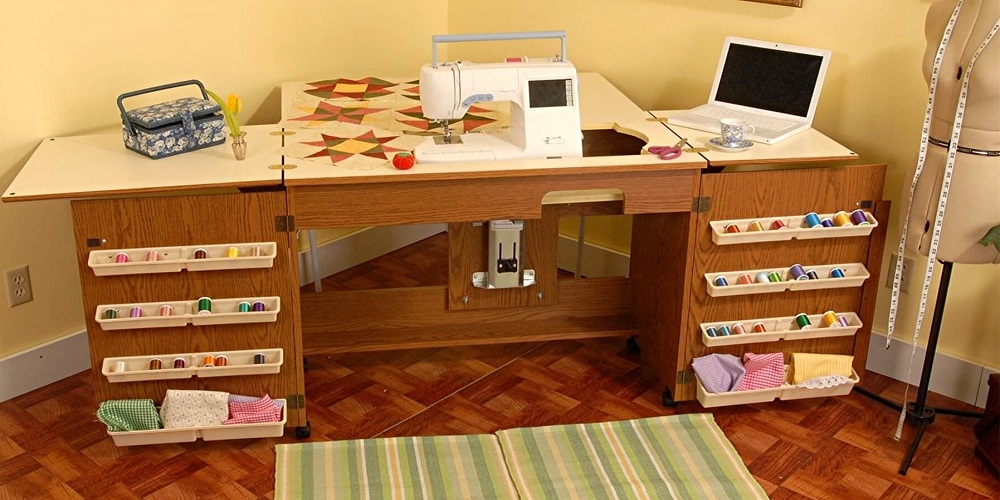
Adjustable Height
With this, a sewer can sew with good posture. Having to arch over a machine or lean in an uncomfortable position can take its toll over time. Most quality brands ensure the machine can drop down, holding it sturdily in place.
Large Work Area
The larger the area, the more tasks it can be used for. A lot of sewing tables double up as craft tables, quilting tables, and more. The width of the surface area may be made wider with an extension table. If this is the case, the unit will usually pack down small, which leads us to…
Convenient Size
If you don’t have the space to accommodate a large unit, then don’t despair. Various brands are making foldable sewing machines, as well as those that extend out to a surprisingly big size, yet fold away to little more than a cabinet.
Sturdiness
The construction of the sewing table is vital since the machine is going to be vibrating as it pushes out hundreds, if not thousands of stitches per minute. Some have lockable wheels whilst others are just made with alloy steel legs that can take the constant movements of a sewing machine.
Storage
The accessory trays are more important than they look and the more the merrier. All sewers have intricate accessories that seem impossible to find at the bottom of a basket, which is why cabinets with trays are a good idea. Alternatively, drawers and other spaces to put bobbins, thread, and needles are always welcome.
Airlift Positions
Being able to move the sewing machine to a convenient height is a big plus as it means a comfortable sewing experience. A standalone table cannot offer the ability to change between free arm and flatbed sewing so easily, but any table with a drop-down area should offer multiple positions for sewing in comfort.
The Right Space For A Machine
All sewing tables are different and whilst some might look big, they are only as useful as the size of the machine it can accommodate. Always check the dimensions in width and length, comparing it to the sewing machine before purchasing or it won’t be much use.
Materials
Always be wary of a bargain as it can mean the materials are cheap and will feel it when it arrives. It is fine for the unit to have a laminate finish to protect the wood, as long as it has a decent weight to it, the table should last.
Easy To Assemble
The bigger the table, the longer it is likely to take to put together. However, some of the smaller units can be complicated when it comes to assembly. This shouldn’t be a deal-breaker if the table is the perfect fit, but it can be frustrating.
These neat units aren’t just for professionals, anyone who likes to sew can use them. A hobbyist will find it much easier to learn this new skill and advance their capabilities with a sewing table to hold the machine in a convenient position. Someone who is making a living from sewing or crafting should consider purchasing one as a priority.
The good news is that they do not have to cost a lot. There are quality products available for around $150. These offer many of the above features. Anyone with the budget to afford a top-end product will need around $1,000 to get one of the best, These come with all the features, but a larger surface area, quality materials, and at times, some added conveniences.
Although nothing betters a dedicated sewing table, it is possible to use an alternative temporarily. Avoid using a folding card table as the heavy vibrations can cause the unit to break, and the machine to move. A kitchen table can make a decent solution, but again, this is not ideal for long term use.
Anything of 4 ft and above is a decent work area. Look for products with extendable areas that can be used when needed or save space when not in use. If you have more room then go for a larger table as this will open up more possibilities and make it easier to cut large pieces of fabric and work on quilting projects.
This varies but most tend to be made with an average height of 5 ft 3 inches in mind. This can be made to work for you with a quality sewing chair that has an adjustable height.

